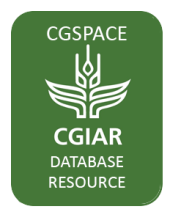/ library resources
Showing items 71740 through 71748 of 73534.Lessons from 11 years of CCAFS Low-Emissions Development Research was presented by Lini Wollenberg at a USAID Research Webinar on June 27, 2022.
One potential path for increasing yields is to invest in land cultivated by women. Although agricultural intensification has been the standard approach to increase yields, there is a recent push to emphasize sustainable land management (SLM).
Under the conditions of Moroccan rainfed agricultural areas, wheat cropping systems—the population’s basic staple food—are subject to a set of limitations that seasonally impact crop production and farmers’ incomes, thus national food security.
With climate change, population growth, and land degradation exerting mounting pressures on agricultural systems in developing countries, climate-smart agriculture (CSA) strategies have been prioritized as a means to strengthen smallholder farmers' resilience.
Livestock production is a fundamental source of income and greenhouse gas (GHG) emissions in Latin American countries. 20 percent of the region's emissions come from agriculture, 70 percent of which comes from livestock.
The presentation explains how an effective pastoral territorial development (investment) could be a key driver for enhancing rangeland governance and restoration.
A one-day workshop in Ségou, Mali was organized to test the results of the Climate Security Sensitivity Tool (CSST) and reflect on the reliability of its recommendations.
Zambia has historically qualified as a regional model of stability and peace.
Paginación
Land Library Search
Through our robust search engine, you can search for any item of the over 64,800 highly curated resources in the Land Library.
If you would like to find an overview of what is possible, feel free to peruse the Search Guide.


